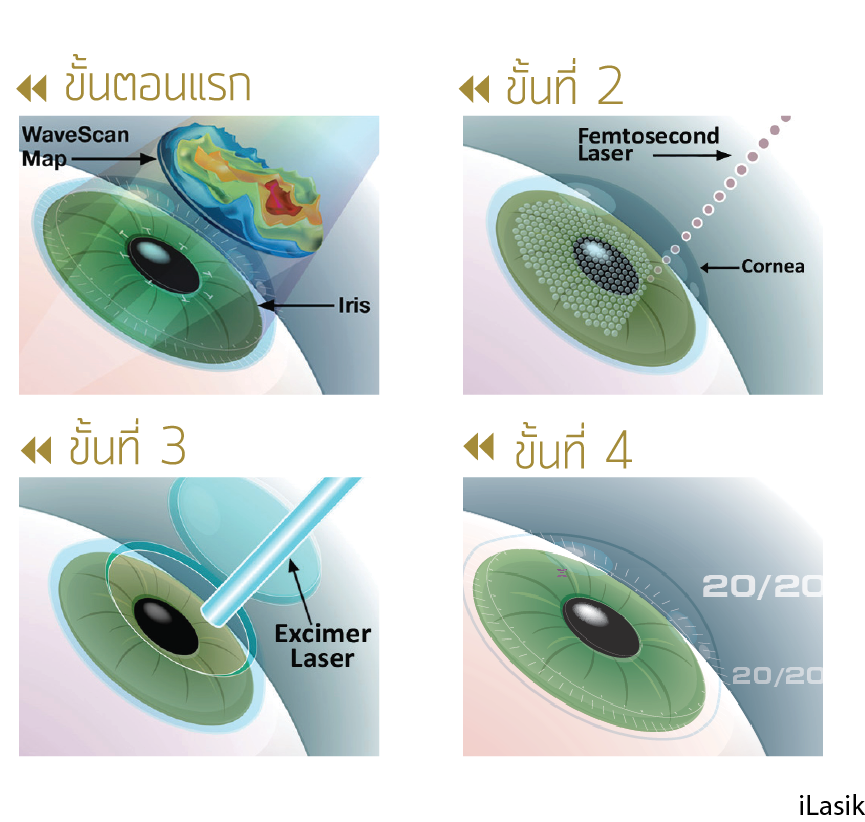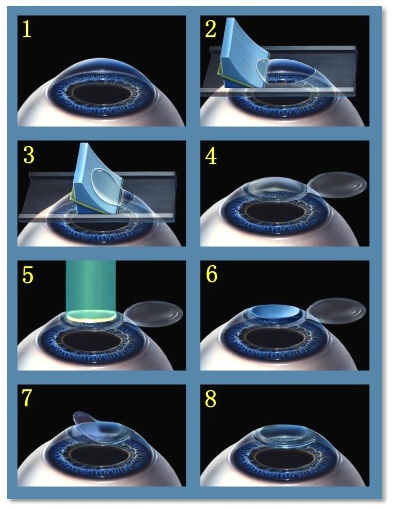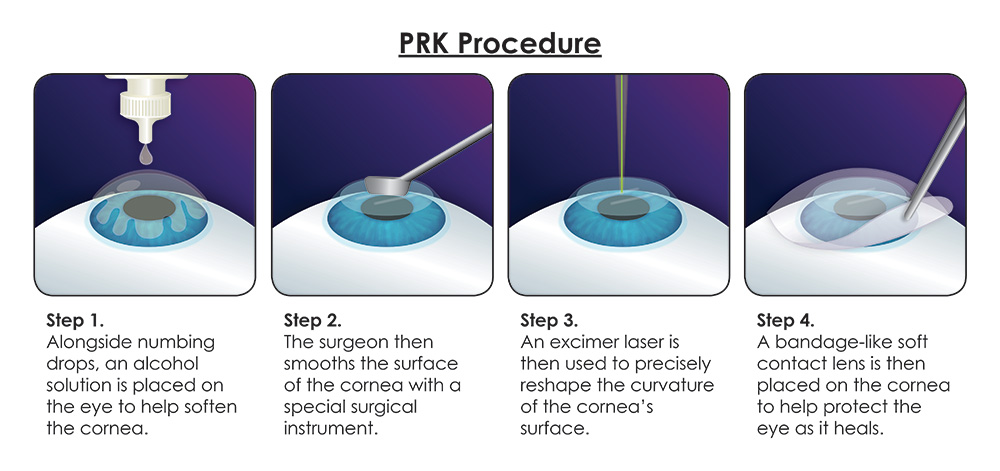Solution to Eye Problem
The most common vision problems are caused by refractive errors. That is the eye’s inability to focus the light directly on the retina. Because people are tired of having to depend on glasses and contact lenses all the time, they start to look for other options such as “LASIK”
LASIK is a procedure that is used to reduce or eliminate nearsightedness, farsightedness and astigmatism by changing the shape of the cornea to focus the light exactly on the retina. After LASIK treatment, vision typically returns back to normal quickly.
LASIK has the intention of making things visible without having to use eyeglasses and contact lenses, creating a better personality and increasing the chance for engaging in professional occupations such as pilots, flight attendants, police officers and so on.
iLASIK Vision Correction Procedures
The procedure for Vision Correction with iLASIK
Step 1: Using Wavescan to recognize the corneal surface and iris’ prints. This is to keep the eye’s identity before the vision correction.
Step 2: Using Femtosecond Laser to create a flap gently and precisely without using blade.
Step 3: The cornea’s surface is reshaped by a high precision Multi 7 laser Custom Designed specifically for each individual’s eye.
Step 4: The final step of the treatment is placing back the flap to its original position letting the cornea heal by itself.

Vision Correction with LASIK (Laser In-Situ Keratomileusis) LASIK is a preferred choice for many patients because of its good results, however the use of microkeratome may cause corneal distortion and dry eye symptoms. Procedure for Vision Correction with LASIK Step 1 : Using a microkeratome to create a flap that is 1/3 of the corneal thickness Step 2: Using excimer laser to precisely remove an amount of corneal tissue to reshape the cornea to its desired curvature Step 3: Placing the flap back to its original position and letting the cornea heal by itself.
PRK Vision Correction Procedure
The Procedure for Vision Correction with PRK
Step 1: Removing the outer layer of the cornea
Step 2: Using the excimer laser to remove amount of tissue in the middle layer of the cornea.
Step 3: Placing a contact lens on the cornea







